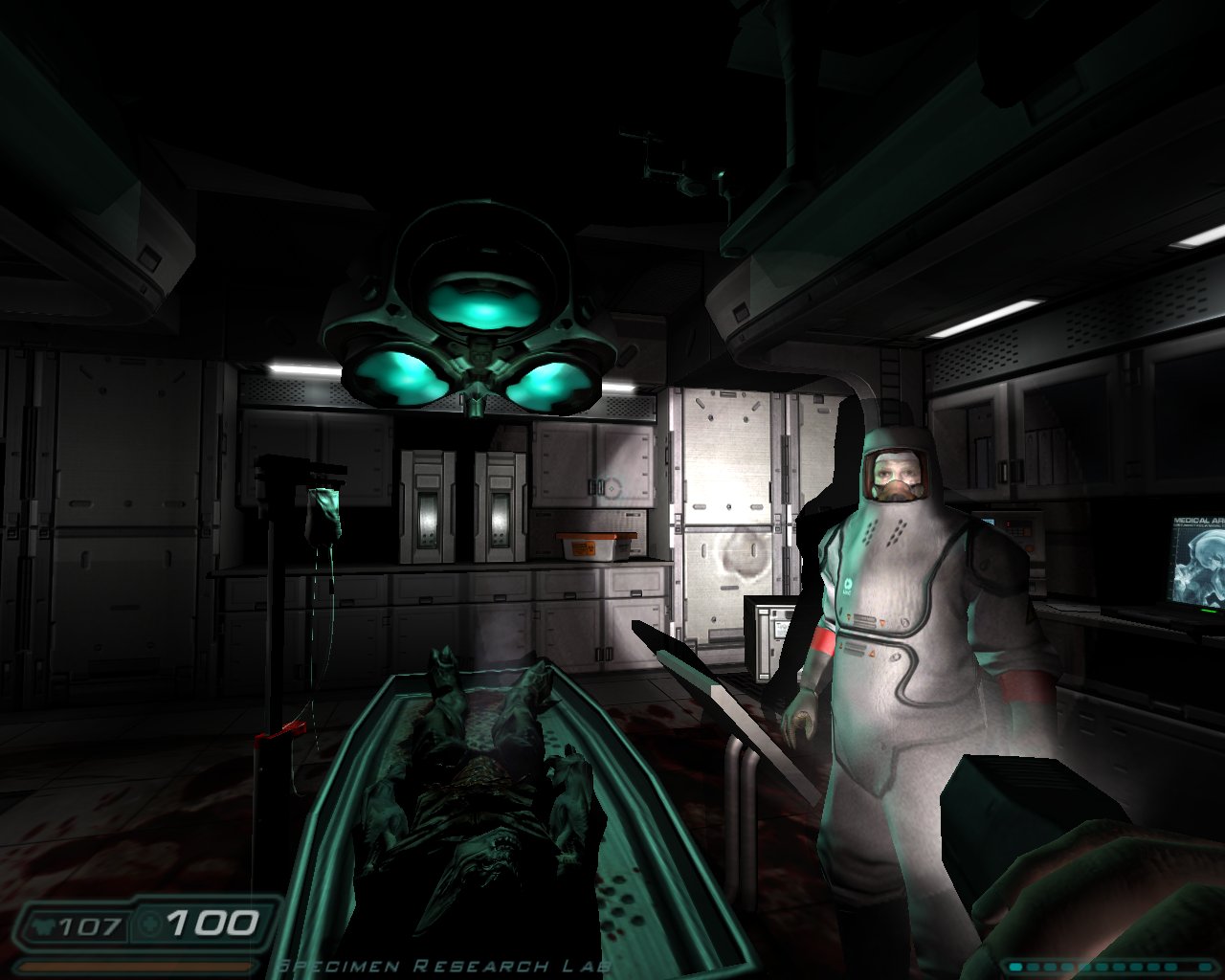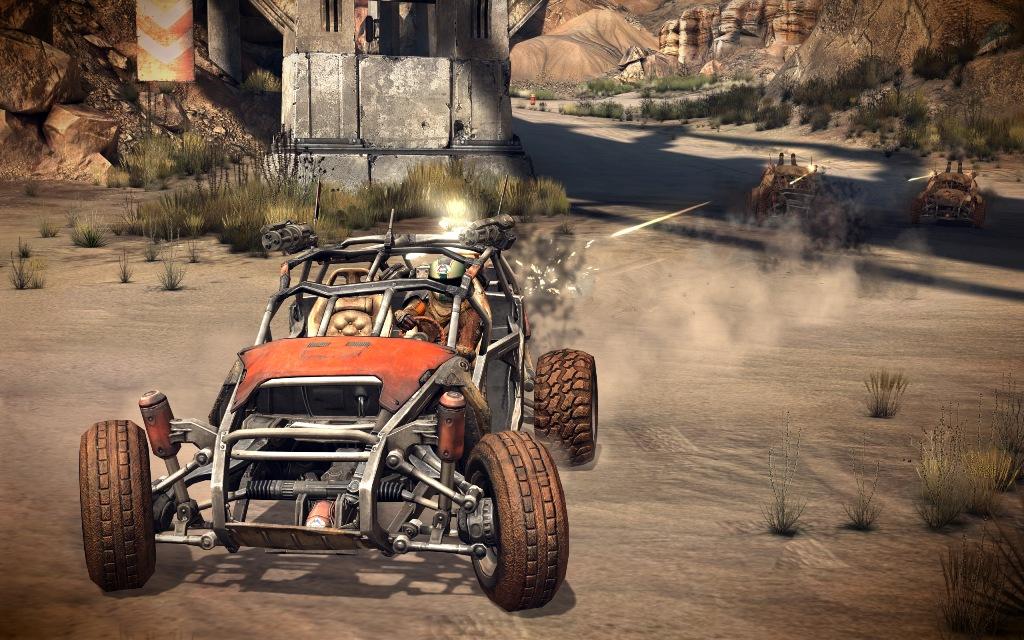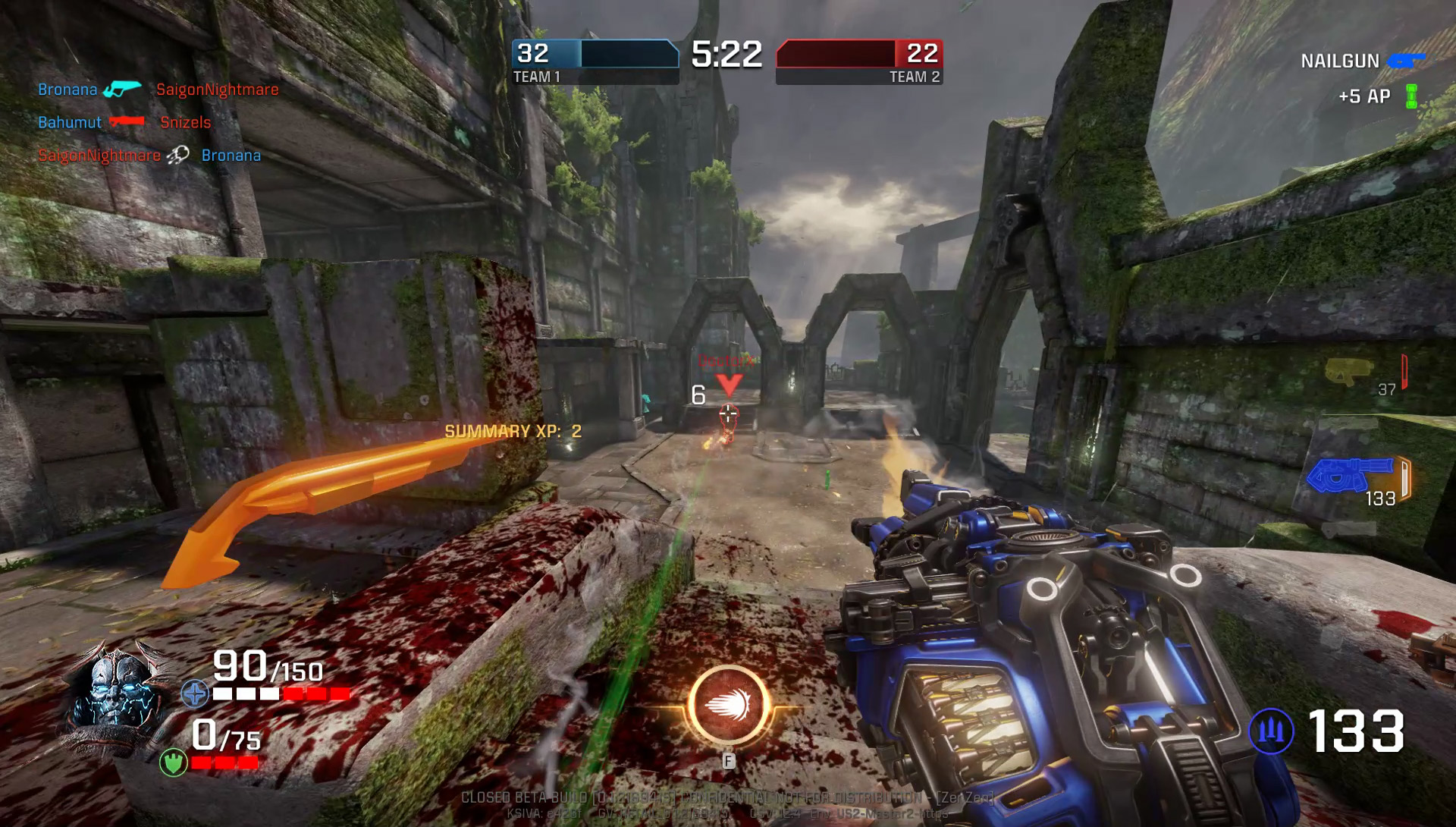Tim Willits, chief creative officer at Saber Interactive and former studio director and level designer of id Software, is one of the key people behind the DOOM, Quake, and Rage franchises. We caught up with Tim amid WN Winter’21 in a futile attempt to capture his 25+ years in video games, as well as to find out what he’s up to these days.
Tim Willits
Oleg Nesterenko, managing editor at GWO: Tim, for starters, there’s a story to how you got into video games, right?
It was the end of 93 or early 94. I had just bought myself a new PC. I was looking for stuff to play, and I downloaded the shareware episode of the original DOOM. I was running around that first room in the game. What I didn’t realize was that you could open doors by hitting the spacebar. Well, to be honest, that big sliding door at the end of the hallway didn’t even really look like a door. Anyway, when I finally figured out how to open it, my entire life changed. That was the moment.
The door didn’t just open into video games. It opened into id specifically. You were DOOMed to spend a quarter of a century with the studio!
I was blessed to be able to work with such talented people and to see the industry evolve from its early days, when a small group of people could make something amazing, to its present state, when mega teams work on mega projects.
One thing is kind of sad, though. It was exciting to experience the original DOOM as a fan. Obviously, I didn’t have that opportunity with all the other games that I worked on at id. I wish I could have played Quake or DOOM 2016 as a fan. Well, at least I get to do that with all their future titles.
DOOM (1993)
You joined id Software in 95. In 96, the first Quake came out, and you were already designing levels for it. It was the first game to feature real-time 3D rendering. Such a huge tectonic shift. How did it change your perception of your craft, of video games in general?
It changed everything. The original Quake, in my opinion, was actually more influential to the industry and what we do today than the original DOOM was (as impactful as DOOM was!). Quake was really the first true 3D game where you could look up and down and had multiple level spaces. It was the first game that had a client-server multiplayer. It was the first game to do so many things.
Your career at id is also amazing because you started in design and then gradually moved up into executive roles. If we fast-forward to 2004, you were already creative director at id, and you were also lead designer on DOOM 3. The game deviated significantly from the series’ original run-and-gun formula melding it with survival horror elements. In retrospect, how do you see the direction you took with DOOM 3?
A lot of the design choices that we made for DOOM 3 were literally driven by the technology. It was the first game to have a true dynamic lighting system where every single light was a real light that was not baked in lightmaps.
No one had experienced a game like that before. So the dynamic of light and dark played a very big role in the game. Some people say it’s the darkest game that they’ve ever played.
Plus remember, it was also one of the very first games to have a true height map, a bump map, and a specular map, which created a look and feel that had never been seen before. Absolutely, it was a change in the essence of the series. But it was driven a lot by the revolutionary change in technology.
I had no idea it was ultimately the lighting system that inspired you to make DOOM 3 more of a survival horror game!
That is absolutely the case. Remember how when DOOM 3 came out, it didn’t allow you to use the flashlight and the gun simultaneously?
DOOM 3 (2004)
That feature actually scared the shit out of me! Having to choose between limited visibility and holding the gun out.
We engineered this design mechanic because back then, when you were holding the flashlight, there were too many dynamic lights. The game would get slow [if we added a gun to that, — Ed.]. Later, when computers became much faster, the flashlight mod was very popular [it allowed you to mount the flashlight on your weapons]. And when we remastered DOOM 3 and made the DOOM 3 BFG edition, years later, we enabled the simultaneous use of the gun and the flashlight because the technology was now capable of keeping up with what we wanted to do.
It’s not too different, then, from what Valve was doing. They were also building a lot of their gameplay around the technological advancements of the time. Were you paying attention to where they were taking the Half-Life series?
id has always had a very good relationship with Valve. John Carmack was good friends with Gabe. After all, they licensed our technology. The Source technology was built off the id tech [The first Half-Life used the modified version of the Quake engine as licensed by id Software — Ed.].
So yes, we were looking at what they were working on, talking with them, spending time with their designers and programmers. We were huge fans of everything they did then, and of course, today as well.
The west coast tour continues. Visiting Valve\Steam today. Incredible offices! Such nice people. @steam_games pic.twitter.com/hvbqrsVCZh
— Tim Willits (@TimWillits) October 17, 2019
So that happened across the board, the technology driving the game design decisions.
For DOOM 3, that was definitely the case. Today, of course, an amazing technology no longer needs to be exclusively what makes your game great. So many companies are using cutting edge technology now, it’s starting to almost plateau. The industry is now more focused on game design, storytelling, and what you can do with the subtle nuances of technology.
So if the core technology is starting to plateau, what’s next for video games?
One thing that I think we will see in the future isn’t necessarily about better graphics. I believe we will see a better AI. I’m not talking about the AI of the enemies or your teammates. I’m talking about the AI that is like a dungeon master of the game. The kind of AI that truly controls the entire experience for the player. There are such advancements in artificial intelligence now! I only hope it doesn’t replace us game designers.
Rage (2011)
Fingers crossed! One last question about your id days. In 2011, you launched Rage. What was it like to start a brand new IP after working for so long on the Quake and DOOM games?
Spending years working on the same franchises is amazing but sometimes it’s fun to make something new.
At the time, we were actually working on a completely different game that wasn’t necessarily Rage. John Carmack was also working on a brand new technology, the MegaTexture technology [it allowed a single massive texture to cover the entire polygon map, resulting in expansive outdoor scenes — Ed.].
So the scope of the world that we were able to build exploded. We immediately realized that there should be vehicles to traverse this huge world. And then we thought, well, if we’re making a vehicle game, we need to have combat, so we need to stick guns on the cars. And when you are thinking about sticking guns on cars, then you’re like, okay, we should go post-apocalyptic. And from that, you ask yourself, how do we destroy the world? We didn’t want to use nuclear war. So we came up with an asteroid scenario.
That was the evolution of what kind of game we wanted to build. We never really got that far away from what we did best, Rage has some handcrafted missions that feel very id Software. But we were also able to build a world that had a unique vibe to it that made it more than just a game on a Mars base.
Wait a second! This is, again, the technology designing the game, to an extent. I can see a bit of a pattern emerging here…
Well, what can you do? When you have the world’s greatest video game programmer, the guy that literally invented the first person shooter who just invents something incredible every few years, you do follow the magic.
Good morning from the new offices. #saberinteractive pic.twitter.com/b3ozYRwOep
— Tim Willits (@TimWillits) August 26, 2019
Do you miss it? Following the magic? Now that you are chief creative officer at Saber? Many devs who go executive reminisce about their days of actually making games with all sorts of nostalgia.
Luckily, even when I was studio director at id, I still had the opportunity to work directly with the teams on the games that I was overseeing. I was always able to get back in and do some design. Now, as chief creative officer at Saber, I work even more closely with our developers. When a team needs a little help, I can always take a deep dive into some design aspect of the game.
And I do feel that I’m in a much more enjoyable position right now because I get to do it on so many different titles. So yes, I understand the fondness of going back in and designing stuff. There is this project that we’re working on right now, I almost pulled out some graph paper and started designing a map. But I stopped myself.
So the soldier is still there. Fighting the fight.
The soldier is there. I’ve never left the trenches. Once you leave the trenches, it’s hard to get back in. So it’s always my advice to lead designers that are moving up into management positions: never fully leave the trench because it is hard to crawl back in. Always keep one foot in action.
That’s what you are doing at Saber? How did you even decide to join the company?
I worked with Saber on Quake Champions, and we really enjoyed working with Matt and Andrey [Matthew Karch, CEO, and Andrey Iones, COO — Ed.], the two founders of the company. I immediately saw the potential of growth there. When I joined them, we had one studio in St. Petersburg and another one in Madrid, and that was really about it. But the passion of the teams, of the game designers was really inspiring. It did kind of remind me of the early days of id.
Quake Champions (2017)
I talked to Andrey and Matt, and the guys said the senior management structure was still missing a creative piece to make it whole. So I joined them, I helped the company through the acquisition by Embracer. And then, we started buying studios all around the world.
We added eight studios in the last year. 4A with Metro, Zen Studios, Snapshot Games, Nimble Giant in Argentina, Mad Head in Serbia. Last week, we acquired Aspyr. I joke that soon the sun will no longer set on Saber.
We have 12 studios now. We are working on somewhere between 20 to 30 games. We have over 1400 employees. And we are continuing to grow. We’re building some of our own IPs. We’re working with licensed titles. We are doing our own publishing and we’re even doing third-party publishing. Plus, there are some amazing co-development projects that we’re working on as well. Saber has a diversified portfolio across many different genres. We’ll actually be making some announcements soon.
Can’t wait to hear them! Ok, I will walk away from this with “Follow the magic” and “Never leave the trenches.” Any last bit of advice to fledgling devs who are hoping to make it in the industry?
Ok. A little bit of advice to people that are getting into the industry or that want to land a job… Here it is. Ty to finish something, make a small app, make a small mod, a small project. When we talk to teams or individual people that are starting their own studio, we look at what they’ve done. Maybe you haven’t made the world’s greatest app or the world’s most enjoyable game. But if you can show that you can come up with an idea, execute on that idea and then finish it, you will become more valuable than everyone else that is asking for the same things.
Finish it [using my best Fatality voice]!
Finish it, yes. So I really encourage individual people or small teams to work on something together, make it small, but get it done.
Tim, thank you for the interview!






